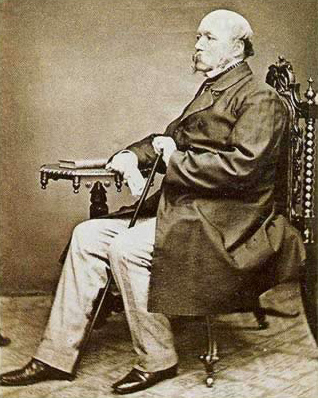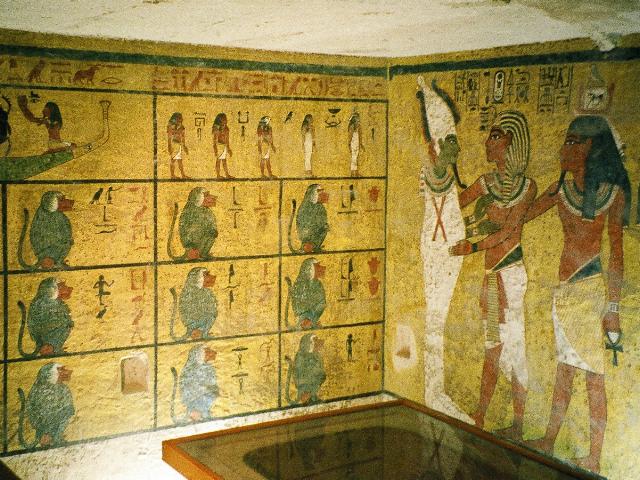|
WV24
Tomb WV24 is an ancient Egyptian tomb located in the western arm of the Valley of the Kings. It was reported by Robert Hay and John Wilkinson in the 1820s and visited by Howard Carter; however, it was not fully explored until Otto Schaden's excavations in 1991. Location, layout, and contents WV24 is located from the entrance of WV25 and, like this tomb, is unfinished. The tomb dates to the Eighteenth Dynasty and consists of a well-cut vertical shaft that opens, via a large doorway, to a single unfinished chamber. Given its close association with WV25, Richard H. Wilkinson and Schaden suggest it may have been intended for a high ranking noble, or perhaps it was meant to be a storage chamber for overflow from the royal burial, as seen with WV23 and WVA. The amount of work done of the cutting of both this tomb and WV25 suggest the tombs were commenced and abandoned at the same time. The tomb does not appear to have received an Eighteenth Dynasty burial. However, it was later us ... [...More Info...] [...Related Items...] OR: [Wikipedia] [Google] [Baidu] |
List Of Burials In The Valley Of The Kings
The following is a list of burials in the Valley of the Kings, in Thebes, Egypt, Thebes (modern Luxor, Egypt) and nearby areas. The numbering system was established by John Gardner Wilkinson in 1821. Wilkinson numbered the 21 tombs known to him (some of which had been open since antiquity) according to their location, starting at the entrance to the valley and then moving south and east. Tombs that have been discovered since then have been allocated a sequential KV number (those in the Western Valley are known by the WV equivalent) in the order of their discovery. Since the mid 20th century, Egyptologists have used the acronym "KV" (standing for Kings' Valley) to designate tombs located in the Valley of the Kings. East Valley Most of the open tombs in the Valley of the Kings are located in the East Valley, and this is where most tourists can be found. West Valley The numbering the West Valley follows in sequence to that of the East Valley, and there are only four known b ... [...More Info...] [...Related Items...] OR: [Wikipedia] [Google] [Baidu] |
Otto Schaden
Otto John Schaden (August 26, 1937 – November 23, 2015) was an American Egyptologist. He was the field director of the Amenmesse Tomb Project of the University of Memphis (Tennessee). In addition to his work on the tomb of Amenmesse ( KV10) in the main arm of the Valley of the Kings, he has also cleared and reinvestigated tombs WV23, WV24, and WV25 in the Western Valley. Biography Schaden taught the Middle Egyptian language at the University of Minnesota in the early 1970s. On 8 February 2006, it was announced that his team had discovered KV63, an intact chamber at first thought to be a tomb. The tomb was slowly excavated from March to July 2006 and appears to have been a mummification storage area for another royal tomb—possibly an unsanctioned tomb prematurely labeled KV64. ''Harper's Magazine'' for January 2008 contains a long essay by Gregory Jaynes about his March 2006 visit to the KV63 tomb, in which he describes Otto Schaden's dispute with his superior Lorelei Corcoran ... [...More Info...] [...Related Items...] OR: [Wikipedia] [Google] [Baidu] |
WV25
Tomb WV25 is an unfinished and undecorated tomb in the West Valley of the Valley of the Kings, Egypt. It is clearly the beginning of a royal tomb, and is thought to be the start of Akhenaten's Theban tomb. It was discovered by Giovanni Battista Belzoni in 1817; he found eight Third Intermediate Period mummies inside. The tomb was excavated in 1972 by the University of Minnesota's Egyptian Expedition (UMEE) led by Otto Schaden. The project uncovered pieces of the eight mummies, along with artefacts from a late Eighteenth Dynasty royal burial. Discovery The tomb was discovered by Italian explorer Giovanni Battista Belzoni in 1817 during his excavations in the Valley of the Kings. His investigation commenced close to the tomb of Ay (WV23), which he had discovered the previous year. The entrance was buried at a shallow depth and found to be blocked with large rocks. Returning the following day, further digging revealed a "well-built wall of stones of various sizes." Belzoni ordered th ... [...More Info...] [...Related Items...] OR: [Wikipedia] [Google] [Baidu] |
WV23
Tomb WV23, also known as KV23, is located in the Western Valley of the Kings near modern-day Luxor, and was the final resting place of Pharaoh Ay of the Eighteenth Dynasty. The tomb was discovered by Giovanni Battista Belzoni in the winter of 1816. Its structure is similar to that of the tomb of Akhenaten, with a straight descending corridor, leading to a "well chamber" that has no shaft. This leads to the burial chamber, which currently contains the reconstructed sarcophagus, which has been smashed in antiquity. The tomb had also been anciently desecrated, with many instances of Ay's image or name erased from the wall paintings. Its decoration is similar in content and colour to that of Tutankhamun (KV62), with a few differences. On the eastern wall there is a depiction of a fishing and fowling scene, which is not shown elsewhere in other royal tombs, normally appearing in burials of nobility. Discovery WV23 was discovered by Giovanni Battista Belzoni, quite by chance, in 1816. ... [...More Info...] [...Related Items...] OR: [Wikipedia] [Google] [Baidu] |
Valley Of The Kings
The Valley of the Kings ( ar, وادي الملوك ; Late Coptic: ), also known as the Valley of the Gates of the Kings ( ar, وادي أبوا الملوك ), is a valley in Egypt where, for a period of nearly 500 years from the 16th to 11th century BC, rock-cut tombs were excavated for the pharaohs and powerful nobles of the New Kingdom (the Eighteenth to the Twentieth Dynasties of Ancient Egypt). The valley stands on the west bank of the Nile opposite Thebes (modern Luxor), within the heart of the Theban Necropolis.Siliotti (1997), p.13 The wadi consists of two valleys: the East Valley (where the majority of the royal tombs are situated) and the West Valley (Valley of the Monkeys). With the 2005 discovery of a new chamber and the 2008 discovery of two further tomb entrances, the valley is known to contain 63 tombs and chambers (ranging in size from KV54, a simple pit, to KV5, a complex tomb with over 120 chambers). It was the principal burial place of the major roy ... [...More Info...] [...Related Items...] OR: [Wikipedia] [Google] [Baidu] |
Robert Hay (Egyptologist)
Robert Hay (6 January 1799 – 4 November 1863) was a Scottish traveller, antiquarian, and early Egyptologist. He was born in Duns Castle, Berwickshire. During his service in the Royal Navy he visited Alexandria, Egypt, in 1818. In 1824 he met Joseph Bonomi in Rome, whom he hired as an artist and who accompanied Hay to Egypt. They stayed in Egypt from November 1824 until 1828, and 1829 to 1834, recording monuments and inscriptions, and making a large number of architectural plans. His manuscripts are now primarily in the British Library, and many of his plaster casts in the British Museum. In May 1828 Hay visited Malta, where he married Kalitza Psaraki, the daughter of the chief magistrate of Apodhulo, Crete; Hay had earlier rescued her from the slave market in Alexandria. After his death in East Lothian, Scotland, in 1863, Hay's collection of Egyptian antiquities was sold to the British Museum, though some objects were purchased by the Boston Museum of Fine Arts The ... [...More Info...] [...Related Items...] OR: [Wikipedia] [Google] [Baidu] |
John Gardiner Wilkinson
Sir John Gardner Wilkinson (5 October 1797 – 29 October 1875) was an English traveller, writer and pioneer Egyptologist of the 19th century. He is often referred to as "the Father of British Egyptology". Childhood and education Wilkinson was born in Little Missenden, Buckinghamshire. His father was a Westmoreland clergyman, the Reverend John Wilkinson, an amateur enthusiast for antiquities. Wilkinson inherited a modest income from his early-deceased parents. Sent by his guardian to Harrow School in 1813, he later went up to Exeter College, Oxford in 1816. Wilkinson ultimately took no degree and, suffering from ill-health, decided to travel to Italy. There in 1819 he met the antiquarian Sir William Gell and resolved to study Egyptology. First sojourn in Egypt Wilkinson first arrived in Egypt in October 1821 as a young man of 24 years, remaining in the country for a further 12 years continuously. During his stay, Wilkinson visited virtually every known ancient Egyptia ... [...More Info...] [...Related Items...] OR: [Wikipedia] [Google] [Baidu] |
Howard Carter
Howard Carter (9 May 18742 March 1939) was a British archaeologist and Egyptologist who discovered the intact tomb of the 18th Dynasty Pharaoh Tutankhamun in November 1922, the best-preserved pharaonic tomb ever found in the Valley of the Kings. Early life Howard Carter was born in Kensington on 9 May 1874, the youngest child (of eleven) of artist and illustrator Samuel John Carter and Martha Joyce Carter (). His father helped train and develop his artistic talents. Carter spent much of his childhood with relatives in the Norfolk market town of Swaffham, the birthplace of both his parents. Receiving only limited formal education at Swaffham, he showed talent as an artist. The nearby mansion of the Amherst family, Didlington Hall, contained a sizable collection of Egyptian antiques, which sparked Carter's interest in that subject. Lady Amherst was impressed by his artistic skills, and in 1891 she prompted the Egypt Exploration Fund (EEF) to send Carter to assist an Am ... [...More Info...] [...Related Items...] OR: [Wikipedia] [Google] [Baidu] |
Richard H
Richard is a male given name. It originates, via Old French, from Old Frankish and is a compound of the words descending from Proto-Germanic ''*rīk-'' 'ruler, leader, king' and ''*hardu-'' 'strong, brave, hardy', and it therefore means 'strong in rule'. Nicknames include " Richie", "Dick", " Dickon", " Dickie", "Rich", " Rick", " Rico", " Ricky", and more. Richard is a common English, German and French male name. It's also used in many more languages, particularly Germanic, such as Norwegian, Danish, Swedish, Icelandic, and Dutch, as well as other languages including Irish, Scottish, Welsh and Finnish. Richard is cognate with variants of the name in other European languages, such as the Swedish "Rickard", the Catalan "Ricard" and the Italian "Riccardo", among others (see comprehensive variant list below). People named Richard Multiple people with the same name * Richard Andersen (other) * Richard Anderson (other) * Richard Cartwright (disambiguati ... [...More Info...] [...Related Items...] OR: [Wikipedia] [Google] [Baidu] |
Third Intermediate Period Of Egypt
The Third Intermediate Period of ancient Egypt began with the death of Pharaoh Ramesses XI in 1077 BC, which ended the New Kingdom, and was eventually followed by the Late Period. Various points are offered as the beginning for the latter era, though it is most often regarded as dating from the foundation of the Twenty-Sixth Dynasty by Psamtik I in 664 BC, following the departure of the Nubian Kushite rulers of the Twenty-fifth Dynasty after they were driven out by the Assyrians under King Ashurbanipal. The concept of a "Third Intermediate Period" was coined in 1978 by British Egyptologist Kenneth Kitchen. The period was one of decline and political instability, coinciding with the Late Bronze Age collapse of civilizations in the ancient Near East and Eastern Mediterranean (including the Greek Dark Ages). It was marked by division of the state for much of the period and conquest and rule by non-native Egyptians. History Twenty-first Dynasty The period of the T ... [...More Info...] [...Related Items...] OR: [Wikipedia] [Google] [Baidu] |




